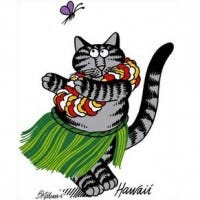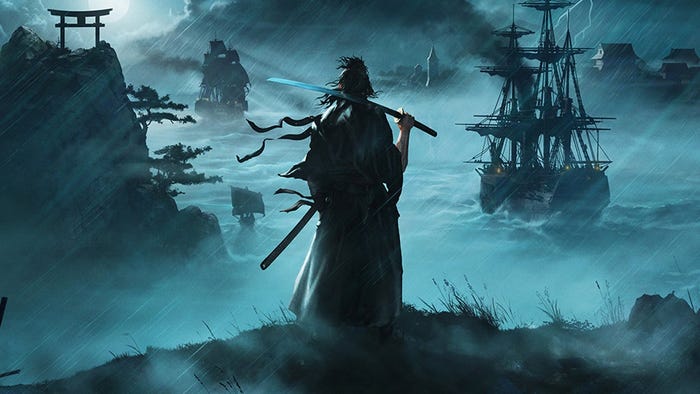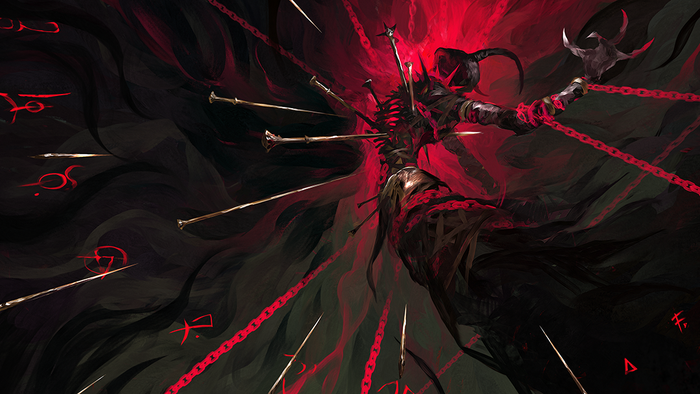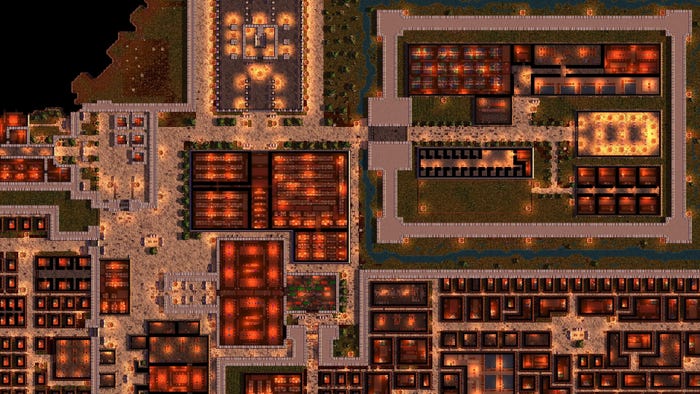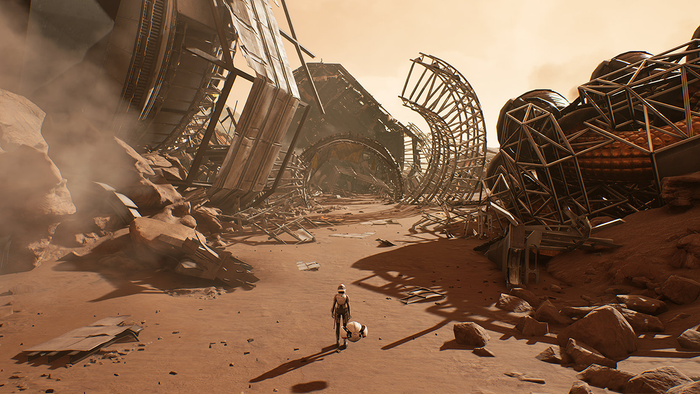Making of Super Mega Baseball No.15 - Tetrahedral
How could game industry newbies bring their game to the next level with high quality sound and particle effects? Bringing in industry vets, of course! This post discusses the making of Super Mega Baseball's most polished effects.

This is the 15th post in a series about the making of our game, Super Mega Baseball. This is copied over from our blog.
--
Super Mega Baseball was coming along, and the end was finally in sight - but there were still some seriously rough edges in the presentation department...especially the lack of audio and visual effects.
Liane: So, what was your original plan for audio in the game?
Christian: I spent I think two days before PAX downloading sound samples and sticking them in the game. It was immaculate.
Scott: Did we even have a plan?
Christian: No.
Scott: I think our plan was to somehow do audio without any assistance from an audio designer.
Christian: Yeah, we didn’t have a plan.
Scott: It was like a lot of other problems in the game's development process, where if someone had said to us “how do you intend to solve this very significant problem?” we would have just said “I don’t know” and continued along.
Christian: Yeah. But it was becoming more and more apparent as we went further along that the audio was getting further and further behind everything else.
In come Reevan and Michelle, industry veterans and owners of Tetrahedral Interactive, who sat down with us for this blog post.
Liane: How did Tetrahedral meet Metalhead?
Michelle: We met at a pub.
Reevan: Yes. We founded our company in Montreal but we had just moved to Victoria, like a few days before, basically. There’s a really great game development community in Montreal where we met a bunch of really great people and there’s a lot of local meetup groups, so we thought we’d see what they’ve got here in Victoria. So we found a local IGDA group that meets periodically at a pub that just happened to be near where our new house was. We went over and immediately noticed Scott standing there wearing his fantastic…
Reevan & Michelle (simultaneously): pink polo shirt.
Michelle: So we starting talking. What was fantastic was that we were doing a 3D game and they were doing a 3D game.
Scott: Yeah, and a tablet was presented to me that showed a tech demo that looked like a AAA game and then I was told that it was made by a two person company, and I was like “oh my god” and then we began to talk a little bit more about that and I realized that there were some pretty sharp folks behind this.
Those sharp folks being Reevan and Michelle, of course.
Liane: What did you think they could help you with?
Scott: More than I’d like to admit at this stage. A lot. Going back to our previous post talking about how everyone involved on the tech side didn’t have any industry experience, and looking at what they had done with their demo, it was just clear that there was a lot of knowledge there that we didn’t have in many respects. And given our tragic audio plans, that aligned really well with what we needed help with, too. So I think it was very clear that even a small amount of time contributed would be enough to help us out a lot.
Christian: Yeah, I mean, the appeal too was that for the first time ever in company history, people who have actually shipped a game before were on board, which definitely wasn’t going to hurt.
Liane: So Reevan and Michelle, what were you doing at the time?
Reevan: We were working on our vertical slice for our hunting-action game Canto which is sort of a fantasy-themed action game. We were starting to look at taking on more contract work so this opportunity came up at a pretty good time.
Liane: What did you end up doing for Super Mega Baseball?
Reevan: So, originally we were going to help these guys out with the audio and just a few visual polish aspects. The demo they showed had some amazing baseball physics but it was missing some of the bits of excitement like the cool bat hits, it had this cartoony look but without the visual effects, it was pretty dry.
Scott: We started just with the effects stuff, on the tech side, right? That was all the initial plan was, right?
 A shot of Reevan's particle effects.
A shot of Reevan's particle effects.
Reevan: Yeah. So we started doing visual effects, the trails behind the balls and the impacts when balls hit the ground and fireworks and things like that. But the more things we tidied up, the more things we realized we had to look at. The stadium lighting was looking good but due to some technical limitations of the engine a lot of the character lighting was not quite there. Characters were pretty dark, they didn’t fit into the stadiums very well and they didn't have proper shadows. So I ended up adding in a new character lighting system that allowed us to really soften up the lighting on the characters and get them that great light bounce that you see at baseball games where you see the grass reflecting on the bottoms of the white jerseys, and stuff like that. Really helped bring the players into the stadium. And I think there was a lot of shader lighting tweaks. Then I tackled the problem of rendering thousands of animated baseball fans in the stands, while still hitting 60 frames per second. And as we're creating all the different variations of effects, we’re like...well, we’re going to need a bunch of audio to account for all these different impacts, like balls hitting the dirt, balls hitting grass. And that went on the list as we worked along.
Christian: I met you guys in the basement here (in our office building), we sat down and we came up with like, I’m not going to say a comprehensive plan for audio….
Michelle: It was a pretty big list.
Christian: It was like okay, here are all the things that we know we don’t have. And you’re like “wow, okay that’s a lot of stuff.”
Scott: The plan for what we needed help with audio-wise was much more detailed at that point than the visual aspect of it.
Michelle: Absolutely, I think so, yeah.
Christian: Of course one of the big audio elements you did was the crowd.
Michelle: The crowd, yeah. That was fun. Since Reevan was handling the rendering side of the crowd system, we were able to work together really well to set-up a dynamic system that tracks the mood of the crowd through the game and make sure the animations and the sounds worked together. I mixed together a bunch of loops of baseball game recordings. And with enough beer I was able to coax everyone and their families to come and record additional crowd noises and yells after-hours in the office, and those are mixed in there, too.
Liane: So what was it like for you working with people who hadn’t made games before?
Reevan: Well it was interesting. They avoided making a lot of the mistakes that we see a lot in game development, but they made a whole different set of mistakes.
All: **Laughs**
Scott: That’s pretty much what I would have expected to hear. **Laughs**
Christian: What I want to know is - now that we’re technically not totally new on the scene, and we’ve actually shipped something - can we manage to make all the mistakes we made last time plus all the mistakes that regular game developers make? Are we at that stage now?
Scott: I think we drop the unique set of mistakes and just switch to the standard mistakes this time around. As long as it’s not both sets...
Michelle: It was refreshing though, because I was really impressed with you guys for what you had accomplished and what you were still trying to accomplish. And that you kept plugging away at it and doing it and it was very…it was inspiring.
Scott: Cool. One thing that I found interesting about the whole process was observing how we learned and came together on terminology. Like, I’d never talked to an audio designer before, someone that has done it and worked with tons of people. It was fun just learning all the lingo. We had obviously learned some things, but there’s just a standard way of communicating, to talk about problems and solutions together, and we hadn’t really learned how. It was cool.
Michelle: It’s really important, I mean I think that happens to most developers who are just learning. Cause there’s always going to be something new that crops up and learning how to communicate is really key. For all disciplines. Of course audio is the greatest because we have to talk to everybody all the time.
Christian: I don’t know if there is anything else you guys want to add? Random miscellaneous ramblings?
Reevan: Michelle, where did you get the fireworks for the homerun sequence?
Michelle: Oh that! We went out for Canada Day, all of us as a group, and I brought my recorder…which I tend to do a lot. I wasn’t expecting that they would turn out, but they turned out really well. I even got some crowd sweeteners for it, which was kind of exciting.
Christian: One thing I remember was Reevan seeming pretty horrified when he started. Because I remember he was trying to make visual effects - and the gameplay elements were straight up not working. It was like “dude, I’m trying to make a ‘guy slides into base’ effect, and the game is incapable of playing slide animations, I can’t make effects if the game can’t even do this.”
Scott: Yeah, there was a lot standing in the way of getting some of the stuff done...missing gameplay, some incomplete tech...
Reevan: So yeah, it sort of started as “make some visual effects” and became “make the visual effects engine and then make the visual effects.”
Christian: And don't forget the meteor.
Reevan: The meteor was awesome. There was nothing wrong with the meteor.
Christian: The meteor was amazing.
Reevan: So here I am working on the visual effects and there were requests for hard, medium and small impacts. But the rest of the game wasn’t entirely working all the time, so I had to go on instinct on how big certain effects should be. And there was one large “ball hitting dirt at high velocity” effect that sort of looked like a mortar had gone off or something.
All: **Laughing**
Reevan: It probably would have been more at home in Call of Duty. It was awesome.
Christian: It was awesome.
Liane: What did Reevan and Michelle’s help do for the game?
Christian: It made the quality go up in a hurry. We definitely noticed a large improvement in the production of the entire situation once they started working on it.
Scott: People have pretty established expectations these days about what a modern, current-gen console game is gonna be, and I think there are a lot of things that we probably wouldn’t have been able to deliver. I mean, we have a ways to go still, but having these guys involved made a huge difference in getting closer to hitting those expectations, I think.
Liane: Last anecdotes? Anything else?
Reevan: Some of the umpire recording sessions were pretty funny. There was stuff from that that tragically, or perhaps mercifully, will never see the light of day. There was some fine comedy there.
All: **Laughing**
Michelle: There was some fine, fine comedy. It was basically you guys who did the umpire voices. Which was exciting. Quite fun, for a ‘no budget for audio’ thing it was perfect. And Mike was astounding, he sort of blew everybody away.
Reevan: Yeah cause Mike is like the sweetest, quietest, calmest guy but when he got the role of Angry Umpire…
Michelle: And he kept stopping and saying “but umpires aren’t angry, I’m not angry” then he’d go **big roaring sound**!”
Reevan: And everybody would snap to attention.
All: **Laughing**
Thanks to Reevan and Michelle, Super Mega Baseball was starting to look and sound like something we could actually ship. In the next few posts we'll cover the final steps before releasing the game.
--
This is the 15th post in a series about the making of our game, Super Mega Baseball. This is copied over from our blog.
About the Author(s)
You May Also Like

